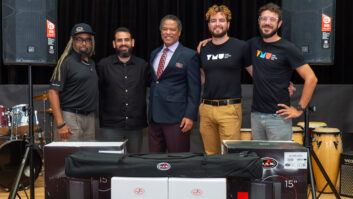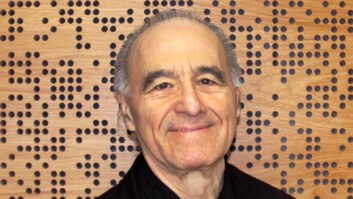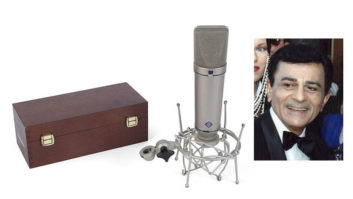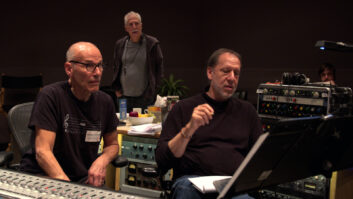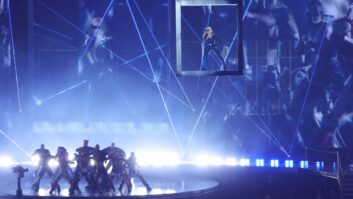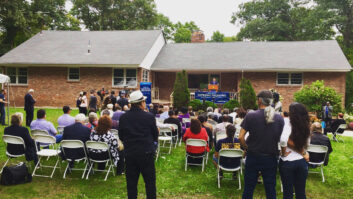John Fry in 2006
The music industry suffered a loss in December, 2014, when Ardent Studios and label founder John Fry suffered a cardiac arrest and died at age 69. Back in February, 2007, Fry wrote a thoughtful article for Pro Sound News on the role technology played in both his innovative studio’s history and the recording world at large. In memoriam, we share his insights here again.

On the occasion of the 40th anniversary of Ardent Studios, I have been asked to give an overview of the changes in technology I have witnessed during my career. The story actually spans more than 40 years, since I had a home studio in my teenage years and released the first 45 on Ardent Records in 1959. The gear at home started with crude mixers and a single stereo recorder, but culminated with what passed for a fairly sophisticated set-up for the time—an Altec 250SU 10-input valve console, an Ampex 354 two-track modified to add sync, an Ampex mono recorder, a Pultec EQP-1A (which we still have in operation condition), and an Altec 436B compressor. The spooky thing I recently learned while reading the excellent book Recording The Beatles by Kevin Ryan and Brian Kehew is that Abbey Road had 436Bs and we had made modifications to ours that were very similar to the EMI mods.
I was 21 in 1966 when we built our first “proper” studio around a 14-input console fabricated from Spectrasonics solidstate amplifiers and equalizers (much underrated these days), a Scully recorder featuring a dazzling four tracks, and three EMT stereo plate reverbs. The pace of change then really accelerated with a Scully 8-track arriving in 1968 and a 3M 16-track with Dolby A in late 1969, accompanied by a Spectrasonics/Auditronics 20-input, 8-buss console. This console was identical to one purchased by Stax Records in 1970. Our unit has been kept in storage all these years and is being donated this year to the Stax Museum of American Soul Music. Other children of the Sixties included an enormous Moog synthesizer sprouting many patch cords and a Mellotron purchased directly from the UK.
1972 brought a move to our own purpose-built structure with two studios, the addition of a second 3M 16-track, a 24-input 16-buss console—again from Spectrasonics/Auditronics—and three live echo chambers joining the EMTs. The handful of outboard compressors and equalizers which had previously sufficed now mushroomed into a much-greater number and variety of devices from manufacturers such as UREI and ADR. By the mid-Seventies, the first digital effects devices began to slowly emerge from Eventide, Lexicon and others, and from the early Eighties on, we began to have access to a previously undreamed of diversity of effects
In 1976, we established Ardent Mastering, purchasing the Neumann VMS70 mastering system which had previously been owned by Stax. Also in 1976, the first 24-track arrived from MCI, soon to be joined by another. Throughout the years when analog tape was king, we continued to use Dolby noise reduction for both multitrack recording and stereo recording.
Our building was enlarged in 1980 to accommodate a third studio, where a MCI 56-input console with crude automation made 48-track recording possible by synchronizing two 24-track machines. The early Fairlight computer musical instrument came on the scene in 1983 as a harbinger of today’s versatile sampling and sequencing.
A truly profound change came in 1985 with the acquisition of a SSL 6056 console and our first digital 32-track and 2-track recorders from Mitsubishi. We now had the ability to store and recall all console parameters along with comprehensive dynamics and equalization on every input. By the late 1980s, our other consoles had been replaced by Neve products. The 32-track recorder was soon joined by two more and a number of two-tracks. These remained our recording platforms until the arrival of the first Pro Tools systems in the late 1990s. Oddly, due to the growing interest by many engineers and producers in working at least partially in the analog domain, in the early 1990s, all our aging analog multitracks were replaced by Studer 827 24 tracks with additional 16-track heads.
As Pro Tools became the primary digital format, analog and digital outboard devices were joined by a variety of increasingly sophisticated plug-ins for almost every imaginable purpose. Three years ago, we replaced all our Pro Tools systems with very comprehensive Pro Tools HD systems which provide greatly improved fidelity, ease of operation and reliability.
Well, it’s been a wild ride from mono recorders to an almost limitless number of virtual tracks, from vacuum tubes to integrated circuits of amazing complexity, from no computers at all to affordable high-performance computers that offer better value for money with each passing year. I never dreamed in the 1950s and 60s that I would see most of these things in my lifetime, but I do remember that when I saw my first VCA in our 1960s Moog synthesizer, and I figured out what it did, I thought “You know, if you had some way to control that thing, you could make an automated console.” It also never occurred to me that we would have tube outboard devices, a Mellotron, and many microphones from the 60s operating alongside modern equipment in 2006.
In closing, as helpful as today’s technology may be, it is interesting to note that the recording format for the last two projects we mixed for Jack White (The White Stripes, Get Behind Me Satan, 2005 Grammy Winner, and The Raconteurs, Broken Boy Soldiers, two Grammy nominations for 2006) was 8-track, one-inch analog tape.
